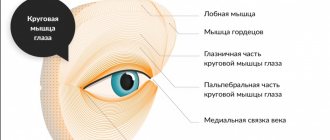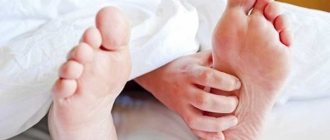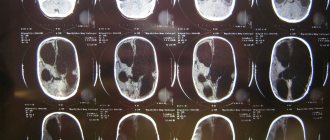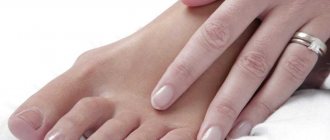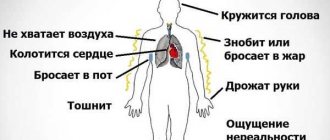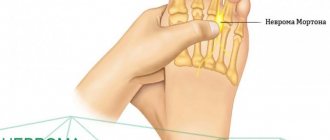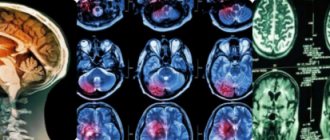Relieving spasticity after a stroke turned out to be extremely difficult. The point is a contradiction that arises. We stubbornly restored strength and endurance. They did this with the help of special exercises with high loads and a lot of repetitions.
For the treatment of spasticity, this is a hindrance and harm. When relieving spasticity, you need a relaxing massage and light movements in the exercises. To continue recovery after a stroke, it is necessary to carry out mutually exclusive activities. But we came up with a simple solution. Make two groups of classes.
First: to restore strength and endurance. The second is for treating spasticity, restoring balance and coordination. The decision turned out to be very correct. True, we did not figure it out right away and for some time we did exercises to relieve spasticity along with exercises for strength and endurance. We noticed in time that active exercises made the spasticity worse.
What is spasticity?
Spasticity manifests itself in stiffness. It is impossible to make a fast or sudden movement. Constantly tense muscles block freedom . Feeling like you are a very rusty Terminator))). Tension leads to rapid fatigue.
Recovery from a stroke can actually be blocked by spasticity. It is difficult to restore skills when the limbs seem to be tied with rubber bands and are always in a tense, unnatural position. To relieve spasticity after a stroke, we use basic exercises. The main thing is to do them easily, without stress.
Muscle spasticity is an involuntary contraction, cramp or spasm due to disruption of the conduction of nerve impulses after a spinal cord or brain injury.
Most often this condition manifests itself at night, but it can also significantly complicate life during the day.
The situation after a stroke or head injury
This is where physical therapy comes to the fore. She gets comfortable from the first days of illness and trains lost movements. The patient begins to stand and walk independently.
The most commonly prescribed medication is Sirdalud. The doctor correctly determines and develops its dosage to prevent sedation.
When muscle spasticity occurs during a stroke, motor function can be seriously impaired. In this case, botulinum toxin is injected. Optimal results are achieved if its injections are made in the early period (less than a year) of the disease and a modest level of paresis.
Mechanism of spasticity formation
Experts call the main reason for the formation of seizures an imbalance of the inhibitory effect of the motor elements of the cerebral cortex on cells in the structure of the spinal cord.
The natural result is the disinhibition of the tonic reflex - muscle spasticity is formed in the injured limbs of a person.
In a normal state, a person does not have to think about the order of the phenomena produced in the muscles: which of them first needs to be contracted, then relaxed - our brain has brought such activity to automatism.
After a stroke or injury, the death of cellular elements responsible for special inhibitory impulses in the motor neurons of the brain and spinal cord occurs. Reflex arc: limb - spinal cord - brain ceases to be a single system - coordination is impaired.
Spasms do not form immediately - over the course of weeks and even months. Leads to significant secondary changes in muscles and joints - enhances the negative impact of paresis on the motor system.
Physiology
Paraplegia and tetraplegia are often accompanied by convulsions - involuntary movements of paralyzed muscles. They are caused by sudden muscle contractions. Although communication with the brain is disrupted, the body below the lesion sends signals to the spinal cord, which reflexively responds with muscle contractions. The activity of the so-called reflex arcs of the spinal cord increases, that is, irritation spreads even faster, since as a result of the lesion the transmission of weakening impulses from the brain is disrupted.
The intensity of cramps varies from person to person. If the lower lumbar vertebrae are affected, and the so-called flaccid paralysis, then no seizures are observed.
Mild cramps can often help perform normal daily tasks: getting dressed, moving from bed to chair, or turning over in bed.
Severe cramps can cause a lot of muscle tension, often making it difficult or difficult to perform daily movements. In addition, this tension can cause pain during sleep and rest.
Sometimes, along with convulsions, spasms occur, which are already complications. Spasms are also involuntary muscle contractions, but they are longer lasting and cause sharper, sudden movements. The concepts of spasms and convulsions are often confused. Most people use the word “spasms,” although we are talking only about cramps.
The occurrence of cramps and spasms can be caused by both physical and mental factors, such as stress, fatigue, pain, ulcers, urinary tract infections, heat, cold, menstruation, walking on uneven surfaces, or simply changing the position of the legs or the whole body. You can recover from seizures on your own or with the help of a kinesiotherapist. If cramps interfere or complicate daily activities, you can resort to medications or electrical stimulation.
Degree of severity of limb spasticity
The first signs of the onset of muscle spasticity are observed on the very first day after the injury, and subsequently tend to intensify.
The degree of severity may change under the unfavorable influence of negative factors, for example:
- when there is a change in emotional mood - a person has a tendency to depression;
- when weather conditions change - fluctuations in temperature or light parameters;
- in case of excessive physical overload caused by early physical activity of the victim, contrary to the doctor’s recommendations.
When the intensity of the load on the muscle fibers in the limbs increases, their motor activity becomes difficult, and symptoms of pain in them of varying degrees of severity are observed.
Depending on the severity of spasticity, the following forms are distinguished:
- Mild muscle spasticity: manifests itself as muscle overexertion, as well as resistance to passive and active movement.
- Moderate spasticity is determined during the period of movement, but does not greatly impede it.
- Pronounced: its resistance makes motor function very difficult. It allows you to produce only the minimum required volume of movement; it is difficult to remove it.
Spasticity of the legs in a mild form is manifested by rapid fatigue of the muscles of the legs, a feeling of “muscle congestion” from physical activity, walking becomes easier in heels, then it becomes difficult to pull the toes towards you and straighten it at the knee.
In a severe form of spasm, one or both legs are locked in a flexed knee or hip position and the foot turns inward or outward. When walking without special shoes or a foot brace, deformities or contractures may occur.
The manifestation of hand spasticity in a mild form: it is difficult to extend the fingers and straighten the arm at the elbow joint; a sign of a severe form is that the elbow and shoulder joints are bent, while the hand is clenched into a fist.
If spasticity is present for a long time without treatment, contracture develops, that is, the joint is not fixed in a physiological state for the body.
In the future, the spasm will only have a negative impact on the implementation of recovery measures. In addition to the limbs, recovery will also worsen in the spine: increased muscle tone causes pain in the back - symptoms of vertebrogenic radiculitis.
Experts note: the earlier adequate treatment with modern drugs was started, and also, the less severe the spasticity, the better the prognosis for rehabilitation measures.
Even if the symptoms are significantly pronounced, and treatment of seizures for certain reasons began at a later time period, a decrease in spasticity significantly improves overall well-being.
Treatment measures
The main goal in the treatment of muscle spasticity is to improve the potential and function of the affected limbs.
Doctors decide how increased tone affects the patient's functional abilities. In people suffering from central paresis, the limbs are less active when compared with patients with 1-2 points on the designated scale.
Some patients with high levels of leg muscle spasticity walk and stand more easily. And when its degree decreases, they move much worse.
Before starting therapy, doctors identify a treatment plan in a particular case (improving movement, reducing negative spasms, etc.) and coordinate it with patients or their relatives.
The specifics of treatment are largely determined by the period from the moment of illness and the level of paresis. The shorter the time since the onset of the disease, the greater the chances of effective therapy.
To achieve a positive result, the following methods are used:
- Physiotherapeutic.
- Pharmacological.
- Surgical.
How to treat spasticity using different methods
Treatment of hypertonicity is recommended if spasticity reduces a person’s activity level or is accompanied by persistent pain.
The most important requirement for treatment is that it be as painless as possible, since pain is greatly amplified by spasticity.
An important point is monitoring the activity of the pelvic organs - preventing inflammatory manifestations in them, as well as timely implementation of measures to prevent the occurrence of contractures and bedsores.
A complex of modern treatment to get rid of spasticity:
- medicinal tactics (mydocalm, baclofen);
- physiotherapeutic techniques;
- orthotics;
- massage effects;
- exercise therapy;
- surgical correction.
The treatment package is selected only individually, directly depending on the location of the lesion and the severity of spasticity. It is also necessary to take into account the technical capabilities of the medical institution.
Spasticity after a stroke or brain injury necessarily requires medication. Treatment should be carried out in stages - with a gradual increase in the therapeutic dose of medication, possibly replacing the drug.
Today, two subgroups are in demand:
- Drugs with a central mechanism of action on the negative focus are reflex inhibition.
- Peripheral drugs – significantly reduce the stretch reflex at the level of the spinal cord elements: muscle relaxants.
Like other subgroups of even the most modern drugs, the above have their own contraindications, so only a highly qualified neurologist should prescribe them.
Orthotics and plaster
Treatment of spasticity by long-term placement of a person’s limbs in a position where the muscles are optimally stretched and tonic reflex activity is reduced is called orthosis by specialists. It helps reduce hypertension in the extremities - pathological symptoms can be reduced many times over.
In case of severe spasticity, it is even recommended to apply a special plaster splint or splint to prevent the development of contracture. It is the splint that fixes the limb in the most acceptable position - in which the muscle fibers are located in a stretched position.
Orthosis treatment is carried out from one to two hours, directly depending on the person’s sensations - if pain increases, the procedure is completed.
Diagnostic measures
During the diagnostic process, the specialist first of all studies the medical history, as well as what medications the patient is taking and whether any of the patient’s close relatives suffer from neurological disorders.
Spasticity is diagnosed using tests, the essence of which is to assess limb movements and muscle activity during active and passive movements.
When examining the patient, the specialist determines whether there is resistance to the limbs during passive flexion and extension. If resistance is present, this is a sign of spasticity, and increased ease of movement may be a sign of paresis.
Physiotherapy for muscle stiffness
- local use of cold - helps to reduce excessive reflexes and maximize range of motion, improve muscle activity;
- local use of heat is excellent for temporarily reducing tone. carried out using ozokerite or paraffin applications, the course is at least twenty procedures;
- electrical stimulation of nerve endings is an excellent technique that allows you to achieve maximum response in the affected areas; the duration of the treatment course is prescribed by a specialist.
Evaluation criteria
The severity of spasticity is assessed by points, the most common being the Ashworth scale. In accordance with it, the following degrees of violation are distinguished:
- 0 — muscle tone is normal;
- 1 - muscle tone is slightly increased and manifests itself in the initial stages of tension with rapid relief;
- 1a - slight increase in muscle tone, which manifests itself in a smaller part of the total number of passive movements;
- 2 - tone is increased moderately throughout the entire passive movement, and it is carried out without difficulty;
- 3 - the tone is significantly increased, there are difficulties in the process of passive movements;
- 4 - the part of the limb affected by paresis does not bend or straighten completely.





